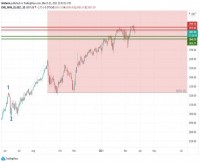|
Opalesque Industry Update - The Lyxor Hedge Fund Index was up +1.3% in November 2014 (YTD +0.1%). 8 out of 12 Lyxor Indices ended the month in positive territory, led by the Lyxor CTA Long Term Index (+7.8%), the Lyxor CTA Long Term Index (+5.9%), the Lyxor Special Situation Index (+3.0%) and the Lyxor Lyxor L/S Equity Market Neutral Index (+1.6%). The rally that started in mid-October extended throughout November without affecting major sovereign bonds. Risky assets were supported by a reflation momentum in Japan, China and, prospectively, in Europe. Meanwhile the acceleration of the plunge in crude oil prices triggered a cross- asset repositioning, offering numerous thematic trades. CTAs delivered an impressive +7.8% over the month, followed by their ST models peers, the Special Situations and the L/S Equity Long bias funds. Credit strategies lagged over the month. L/S equity funds recorded strong performances both on beta and alpha. Number of macro-driven themes resulted in clear sectors repositioning, and alpha generation. Funds held meaningful stakes in DM Consumer sectors which outperformed as a result from lower oil prices. Industrials stocks were reweighted by US managers on firming economic traction. Sectors sensitive to rising rates also progressed. They boosted positions on utilities or high dividend companies. In contrast, exposures to the financial sector only mildly progressed. Positive reflation trends were offset by yield curve flattening and regulation concerns in the US. Energy was a major differentiator. European funds outperformed US funds thanks to their short exposure to the sector, held since the end of the summer. US funds were slower to cut their energy positions over the month. Japanese funds outperformed both their US and European peers. They benefited from the BoJ intervention and confirmations of a general election and the postponement of the second consumption tax hike. Japanese funds adequately started to take profit by month-end and continued to rotate their portfolios toward larger caps. EM markets were more challenging amid weakening commodities, strengthening USD, and flows favoring G3 markets. EM funds’ returns were milder. Their portfolio repositioning toward the Asian financial sector is consistent with anticipations of further PBoC easing. Finally, higher dispersion and a greater focus on earnings releases (somewhat ignored during the correction) benefited market neutral funds. The Quality, Earning, and Contrarian quantitative factors also provided healthy opportunities. Event Driven funds generated strong performances, with elevated dispersion. Funds focusing on the most liquid situations (merger, activist large cap positions) outperformed the ones focusing on smaller, distressed and HY issues. The plunge in crude oil was an obvious drag, but managers had cut about a third of their exposure in October, and continued to trim the sector in November. The merger space enjoyed a rapid recovery. The reset in deal spreads during the correction cleared the way for a fresh tightening round. Besides the Actavis takeover and Medtronics’ reasserted intent to acquire Covidient boosted the Healthcare M&A space. Fading risk aversion offered a nice rally to most activist positions. Some concessions granted to GSEs in the final strategic plan were also favorable. Finally, several idiosyncratic developments played out favorably. Hertz, for instance, was boosted by the appointment of a new CEO and renewed capital commitment from Icahn. On balance, Event Driven portfolios were little changed over the month. Credit funds continued to bleed in November, despite weakening yields. Persisting deflation threats and uncertainties ahead of the Fed cycle kept investors away from credit and illiquids. Besides, the energy sector meltdown reverberated in US as well as in EM credit markets. European funds outperformed on a mild spread tightening/ Periphery trades endured volatility but an overall positive ECB outcome prevailed. Credit funds continued to reduce their net exposure, especially in the US, pretty much across all sectors. Convertible Arbitrage slightly outperformed their credit peers. Pressure on high yield assets, disappointing issuance and their credit exposure was only partially offset by their positive delta exposure. CTAs yet again delivered exceptional returns this month, owing to a powerful combination of macro and market moves. Reflation trends came as a boost to both equities and bonds, where lies the bulk of their exposures. In turn, the widening economic divergence between the US vs. the rest of the world continued to offer favorable trends in USD crosses. Finally the persisting plunge in crude oil since the summer came as icing on the cake. Reversals in soft commodities were a marginal drag. Returns contribution was diversified across assets. On balance, models have gradually reduced their short energy, long USD and long US bonds; they have increased their long EU bonds and long US equities exposures. Global Macro funds were cautiously positioned on risky assets. They recorded – hedged - positive returns. The strong performance produced on equities was partially offset by their implicit DM short bond hedge. Their bull stance on USD marginally played out. They didn’t participate to the outright crude plunge, but successfully played it through relative value trades. Skeptical on Abenomics, they finally jumped on the BoJ reflation bandwagon. They have rebuilt both some of their Japanese and Asian exposures. “Macro liquidity remains abundant. But thinner market liquidity, deflation risks and uncertain central banks’ pace are prone to more frequent rotations. We favor diversified exposure to liquid risky assets.”, says Jean-Baptiste Berthon, senior cross asset strategist at Lyxor AM. Lyxor’s Alternative Investment Industry Barometer, December 2014. Bg |
Industry Updates
Majority of Lyxor indices end November in positive territory led by CTAs that thrive on reflation and crude oil trends
Thursday, December 11, 2014
|
|





 RSS
RSS







